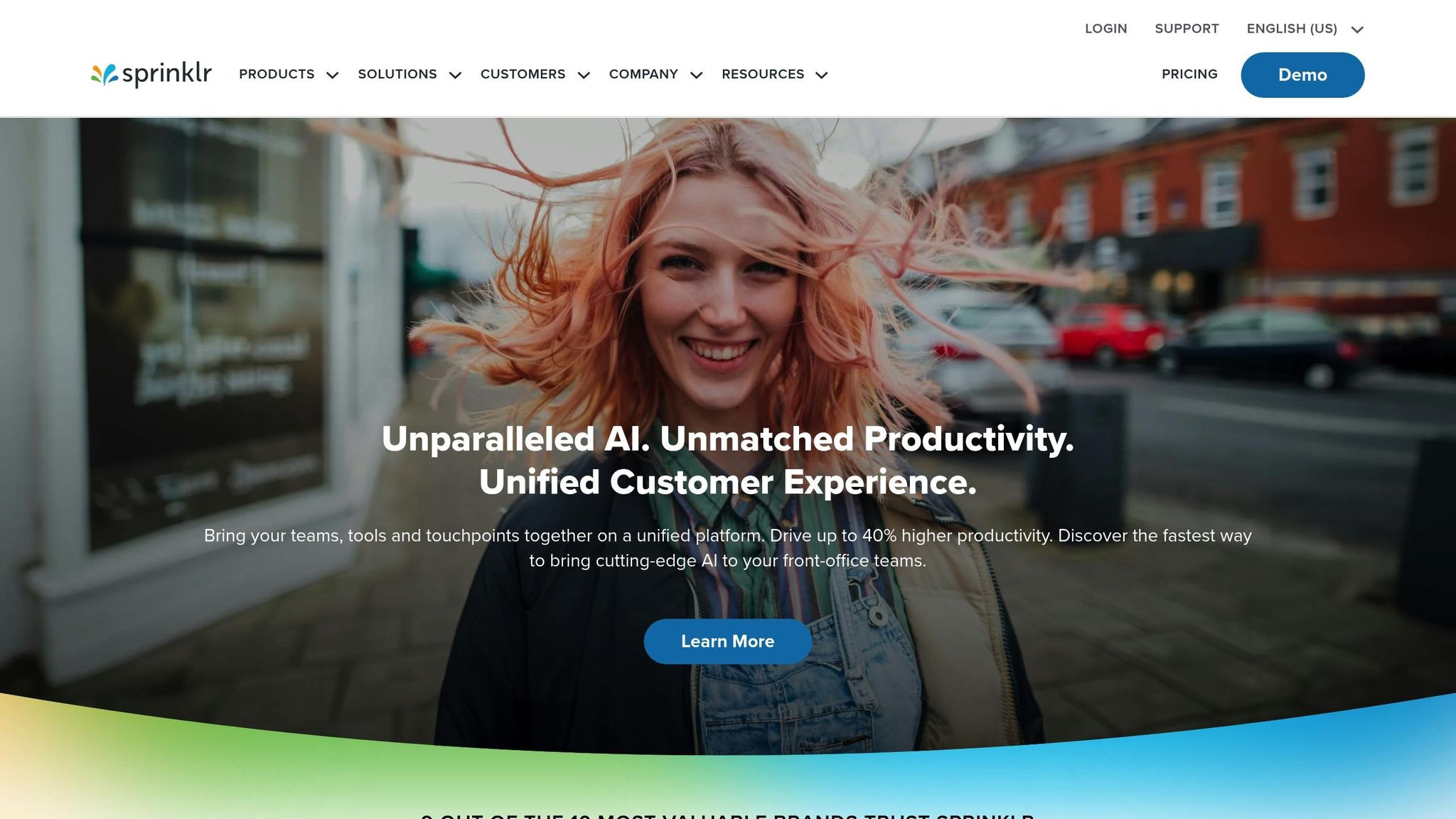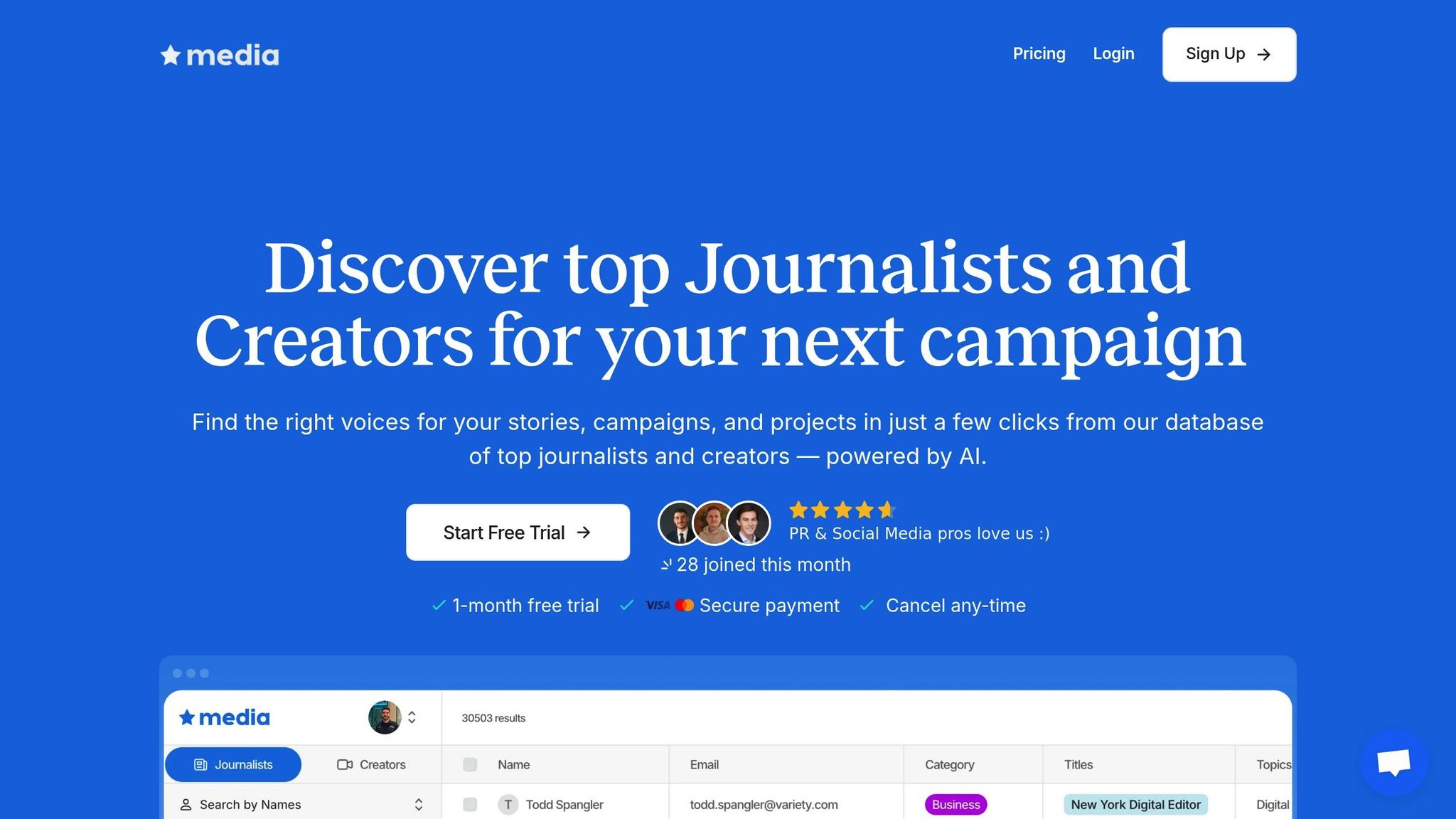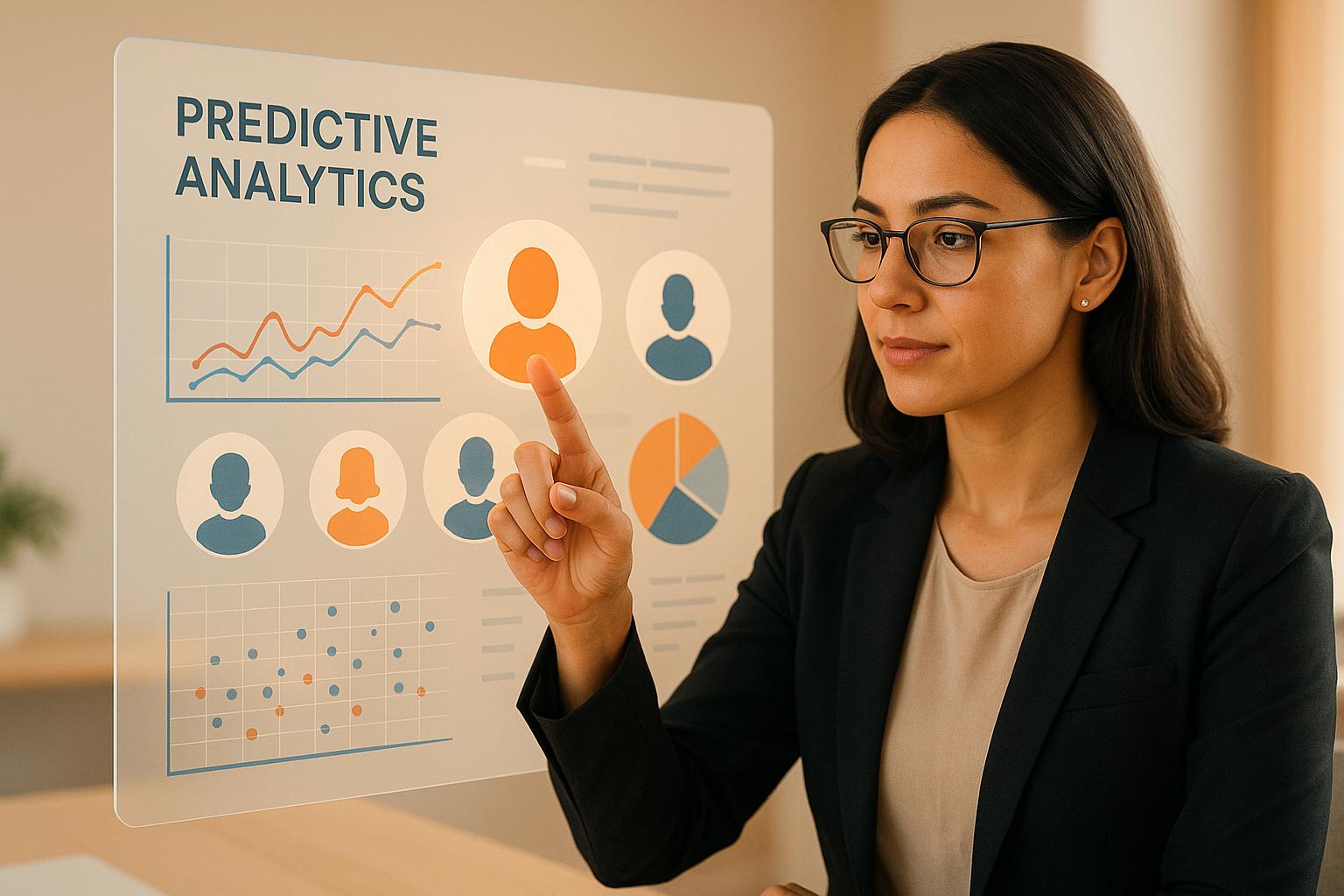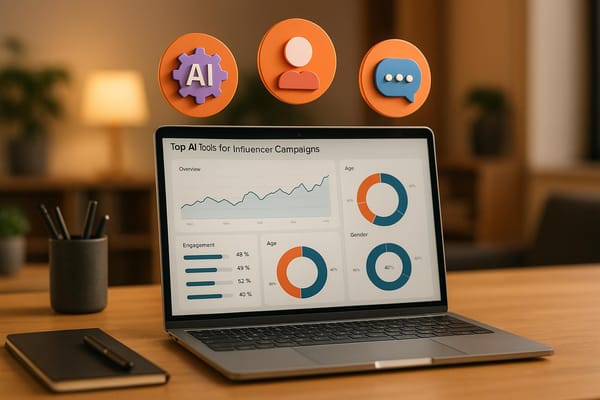How AI Social Listening Improves PR Campaigns
Explore how AI social listening enhances PR campaigns by providing real-time insights, trend detection, and proactive crisis management.

AI social listening transforms how PR campaigns are managed by using advanced tools to analyze sentiment, detect trends, and predict crises in real time. Unlike older methods, AI offers deeper insights into public conversations, helping PR teams make faster, more informed decisions. Here's why it matters:
- Sentiment Analysis: AI identifies subtle emotions like sarcasm or frustration, offering a clearer view of public opinion.
- Trend Prediction: Detects emerging topics faster, enabling PR teams to act before trends gain traction.
- Competitor Insights: Tracks competitor performance and identifies new opportunities.
- Crisis Management: Acts as an early warning system for potential issues, allowing proactive responses.
- Influencer Identification: Pinpoints key voices shaping conversations for targeted outreach.
By combining these capabilities, AI social listening helps PR teams move from reactive to proactive strategies, improving campaign outcomes and brand reputation.
Quick Comparison:
| Feature | Manual Monitoring | AI Social Listening |
|---|---|---|
| Data Analysis | Time-consuming, error-prone | Automated, accurate |
| Sentiment Understanding | Basic, surface-level | Context-aware, nuanced |
| Trend Detection | Slow, manual | Fast, predictive |
| Crisis Response | Reactive, delayed | Proactive, real-time |
| Data Volume Handling | Limited | Processes large-scale data instantly |
AI tools like Media AI further streamline PR efforts by connecting insights to actionable outreach strategies, helping teams efficiently manage campaigns, build relationships, and track results.
How to Use AI-Powered Social Listening to Boost Your Social Media Strategy | Sprinklr

Benefits of AI Social Listening for PR Campaigns
Switching from traditional monitoring to AI-driven social listening offers clear advantages that can directly influence the success of PR campaigns. These benefits go far beyond collecting data - they reshape how PR teams understand their audience and adapt to changing market conditions.
Real-Time Sentiment Analysis
AI sentiment analysis dives much deeper than traditional methods, offering context-aware insights that older tools often miss. While conventional systems might classify a post as positive or negative based on surface-level word associations, AI evaluates the underlying meaning of the message.
"AI-powered social listening tools give brands a clearer, faster, and more accurate view of what matters to their audiences. It moves teams out of reactive mode and into a place where decisions are based on real-time, actionable insights." - Guillaume Deschamps, Digital Marketer at uSERP and Content Management at Wordable
Unlike traditional tools, which can misinterpret sarcasm or miss nuanced references, AI continuously improves its understanding through machine learning. This leads to fewer errors and more dependable insights, empowering PR teams to make informed decisions when it matters most.
The real-time capabilities of AI are game-changing. PR professionals can now detect shifts in sentiment as they happen. For example, imagine a tech company launching a new product. AI tools can instantly analyze feedback from news outlets, social media, and blogs, delivering detailed reports on coverage volume, geographic trends, and engagement metrics. This allows PR teams to adjust their messaging or strategy on the fly, addressing regional reactions or emerging concerns.
Beyond gauging sentiment, AI also identifies emerging trends and predicts patterns, giving PR teams a proactive edge.
Trend Detection and Prediction
AI is exceptional at identifying patterns in massive datasets, uncovering trends that would be nearly impossible for humans to spot manually. This capability allows PR teams to shift from being reactive to proactive. For instance, AI might alert a home-cleaning brand to a growing consumer interest in a new eco-friendly ingredient, enabling them to tweak their product lineup early.
AI also predicts which hashtags, themes, or topics are likely to gain traction. This foresight enables PR teams to craft campaigns that align with upcoming conversations. For example, a beauty brand could use AI insights to detect rising interest in sustainable packaging, allowing them to adjust their messaging and product strategies to meet evolving consumer preferences.
The growing reliance on AI in this space is reflected in market trends. The AI in social media market is projected to grow from $1.64 billion in 2023 to $5.66 billion by 2028, with a compound annual growth rate of 28.04%.
Crisis Management and Brand Reputation
AI also serves as a powerful early warning system for potential crises, leveraging real-time sentiment and trend insights. It continuously monitors for unusual activity, such as spikes in volume, tone changes, or new keyword clusters, without needing manual intervention.
For example, if AI detects initial chatter about a culturally insensitive ad, it enables brands to respond quickly and prevent the issue from escalating. This proactive crisis management is possible because AI can process and analyze conversations across thousands of sources simultaneously, providing context and prioritizing issues based on their severity and reach.
Nearly 90% of businesses now rate the data quality from social listening tools as high or very high. This reflects the reliability AI brings to managing brand reputation. Beyond identifying problems, AI provides detailed insights into their potential impact, helping PR teams respond effectively.
"AI is revolutionizing publicity by enabling faster, smarter, and more data-driven communication strategies...the future of publicity will be shaped by its ability to blend technology with human creativity." - 5WPR Insights
With its speed, precision, and ability to analyze vast amounts of data, AI social listening has become an indispensable tool for maintaining and protecting brand reputation in today’s fast-paced digital world.
How to Use AI Social Listening in PR Campaigns
Implementing AI social listening involves three key steps. These steps help bridge the gap between understanding its advantages and effectively applying it to your PR campaigns.
Choosing the Right AI Social Listening Platform
The foundation of any successful AI social listening strategy is selecting the right platform. This isn’t just about ticking off a feature list - it’s about finding a tool that aligns with your PR goals and can grow with your needs. Look for platforms that provide comprehensive data collection across major social media channels, advanced sentiment analysis, competitor tracking, and customizable reporting. An intuitive interface is also essential, ensuring your team can hit the ground running without a steep learning curve.
Customization is another critical factor. Being able to set up tailored search queries and filters allows the tool to address the specific needs of your industry. Additionally, consider your budget and ensure the platform supports future scalability. Comprehensive training and support resources are also a must to maximize your team’s efficiency and success.
For the best results, compare tools that offer deep omnichannel coverage and advanced analytics to meet your campaign needs.
Setting Up Monitoring Parameters
Once you’ve chosen your platform, the next step is defining monitoring parameters. Start with a solid keyword strategy. Identify the key terms you want to track, such as your brand name, product names, competitor names, and industry-related terms. Don’t forget to include variations like misspellings, nicknames, and related themes to ensure you capture every relevant conversation.
Set up alerts that align with your PR goals. Create distinct categories for different purposes - brand monitoring, spotting industry trends, or crisis prevention - and assign urgency levels and routing rules accordingly. As Ronn Torossian puts it:
"Strategic alert configuration forms the backbone of proactive social listening."
– Ronn Torossian
Additionally, keep an eye on competitors, influencers, and journalists. This can help you identify emerging trends or potential partnership opportunities. For instance, during McDonald’s "Grimace’s Birthday" campaign, their monitoring system quickly caught a viral TikTok trend. By engaging promptly, the brand boosted its engagement and contributed to strong Q2 earnings.
Using Insights in PR Strategies
With your monitoring system in place, the next challenge is turning data into action. Use real-time sentiment analysis and trend detection to fine-tune your PR messaging and prepare for potential crises.
AI social listening can help adjust your tone and content based on sentiment insights. It also provides a clearer understanding of what journalists and influencers are discussing, enabling you to craft pitches that align with current industry trends. Track campaign-specific hashtags, brand mentions, and sentiment changes to make timely adjustments, whether that means amplifying a successful initiative or addressing an issue before it escalates.
Proactively, AI insights can serve as an early warning system, shifting crisis management from reactive to proactive. This allows you to step in early and prevent minor concerns from becoming major problems.
Finally, regular review cycles that combine AI-driven insights with human expertise help keep your PR campaigns sharp and adaptable. By blending data with strategic planning, your team can continuously refine and improve results.
Using Media AI for Better PR Campaigns

Media AI takes the concept of AI-driven social listening to the next level, helping PR professionals turn insights into impactful outreach strategies. By combining a robust media database with advanced AI features, Media AI seamlessly connects data-driven insights to actionable media outreach, making it an essential tool for optimizing PR campaigns.
Media AI Features Overview
Media AI provides access to a vast database of over 30,000 journalists and creators, giving PR teams a direct line to key media contacts. Its AI-powered search and filtering tools allow users to refine this extensive list based on criteria like beat coverage, publication type, audience size, and location.
The platform goes even deeper with advanced filters that let you sort contacts by their specialties, recent topics they've covered, engagement levels, and even their preferred communication styles. This detailed filtering ensures your outreach efforts are laser-focused on the right people for your campaign goals.
Another standout feature is the instant list export, which lets you quickly create targeted media lists without the tedious manual effort usually required. Media AI also keeps contact information up to date, helping reduce email bounce rates and boosting the overall success of your campaigns. And with no contracts or complicated onboarding, teams can dive in and start using the platform immediately.
How Media AI Simplifies PR Campaigns
Traditionally, building a media list could take hours - or even days. Media AI eliminates this bottleneck by using AI to analyze journalist coverage patterns and suggest the best contacts for your story. The platform’s automation ensures you’re always targeting the right people with minimal effort.
When paired with social listening tools, Media AI becomes even more powerful. For example, if your social listening identifies a trending topic or a potential crisis, Media AI can quickly locate journalists who have recently written about similar stories. This ability to respond in real time is invaluable in today’s fast-paced media environment.
The platform also excels at personalized outreach at scale. Instead of sending generic pitches to hundreds of journalists, Media AI provides detailed journalist profiles to help you craft tailored messages. Allison Carter, editorial director of PR Daily, highlights the value of this approach:
"Knowing a journalist is not a magic wand [for PR professionals]. If I know you, I will open your email and take a minute to read it. That's about all I can guarantee."
This underscores the importance of meaningful, personalized communication in building lasting media relationships.
Practical Applications of Media AI
Media AI and social listening work hand-in-hand to elevate your media outreach. When social listening detects a trending topic, you can use Media AI to identify journalists who are most likely to cover the story, positioning your brand as a thought leader before competitors even catch on.
In crisis situations, Media AI can quickly identify journalists who have previously covered similar scenarios with fairness and depth, helping you manage the narrative more effectively.
The platform is also a powerful tool for influencer identification. Beyond traditional journalists, Media AI’s database includes social media influencers and content creators whose audiences align with your target market. If social listening highlights conversations within specific communities, Media AI can help you find the right influencers to amplify your message authentically. Plus, by tracking engagement from these personalized efforts, you can close the loop on your outreach strategy and refine it for future campaigns.
Campaign measurement becomes even more precise when combining Media AI with social listening. You can track which journalists and influencers from your outreach actually cover your story, then use social listening to gauge the resulting conversations and sentiment. This feedback loop allows you to fine-tune your approach for even better results.
Pricing starts at $99 per month for journalist access and $149 per month for full access to both journalists and creators. This flexible pricing structure ensures that the platform scales with your campaign needs and budget.
Best Practices for AI Social Listening Success
To make the most of AI social listening, it’s not enough to simply set up tools and let them run. Accurate and actionable insights require a thoughtful approach and adherence to proven practices that safeguard your organization while keeping your data relevant.
Data Privacy and Compliance
Protecting data privacy isn’t just about avoiding penalties - it’s about maintaining trust. The Clearview AI case offers a cautionary tale. By scraping social media for images without consent, they faced regulatory backlash, significant fines, and reputational harm for both themselves and the organizations using their technology.
When choosing an AI social listening platform, vendor due diligence is critical. Research how potential vendors handle data, their security protocols, and their compliance certifications. Always request documentation to confirm their practices align with your standards.
To further safeguard your operations:
- Establish data processing agreements: Define roles, data retention timelines, deletion protocols, and security measures with your vendors.
- Audit vendors regularly: Periodic reviews ensure they continue to meet the agreed-upon standards.
- Limit data collection: Only gather the social media data necessary for your campaigns. For example, if you're tracking brand mentions, avoid collecting unrelated personal details. This minimizes risk and showcases responsible data management.
- Stay ahead of regulations: Laws around data privacy are ever-changing. Consider consulting privacy experts, especially if you operate in multiple regions or handle sensitive information.
Reviewing and Adjusting Parameters
AI social listening isn’t a one-and-done task. The digital world evolves rapidly, and your monitoring parameters need to keep pace. A great example is Chick-fil-A’s response to its BBQ sauce controversy. Their ability to quickly detect and address negative sentiment allowed them to pivot their campaign and turn the situation around.
To keep your monitoring effective:
- Review parameters monthly: Regularly update keyword lists to remove outdated terms and include new slang, hashtags, or industry-specific phrases.
- Adapt to changing trends: Your strategy should reflect shifts in audience behavior, platform dynamics, and seasonal factors. For instance, a retail brand’s holiday strategy will differ from its off-season approach, and B2B companies may need to adjust around major industry events.
- Check sentiment accuracy: AI tools can struggle with sarcasm, niche references, or industry jargon. Perform spot-checks to ensure your sentiment analysis remains reliable.
Conclusion
AI-powered social listening has reshaped the way PR professionals design and execute campaigns. Instead of relying on manual tracking, these tools now predict trends, manage crises, and deliver tailored experiences - all in real time.
The numbers back this up. The AI social media market, currently valued at $1.64 billion in 2023, is expected to skyrocket to $5.66 billion by 2028, growing at an impressive annual rate of 28.04%. This growth highlights AI's ability to provide real-time sentiment analysis, predict emerging trends, and uncover deeper insights into customer behavior.
But the benefits of AI go beyond just saving time. They represent a fundamental shift in how PR operates. Lindsay Scheidell, Founder of Hadley PR, explains:
"Consider AI-supported media monitoring as an example. I'd much rather spend a chunk of my day building strategy and pushing creative work than spend more time tracking down exposure."
This evolution - from tedious tracking to strategic innovation - is the true advantage of AI-driven tools. Platforms like Media AI empower PR professionals to focus on what matters most: building relationships and creating compelling stories.
However, success with AI isn't just about picking the right software. It requires clear goals, regular monitoring, and constant refinement to stay ahead in today’s fast-changing digital environment. It’s about balancing the precision of AI with the creativity and empathy that only humans can bring.
FAQs
How is AI social listening better at managing large amounts of data compared to traditional methods?
AI-powered social listening is a game-changer when it comes to handling and analyzing massive amounts of data in real time. Traditional approaches, like manual surveys or slower research methods, can’t keep up. AI, on the other hand, leverages machine learning algorithms to instantly monitor unstructured data from sources like social media, blogs, and online mentions. This means quicker and more precise insights.
What makes AI tools especially powerful is their ability to constantly learn and adapt. They can spot trends, detect shifts in sentiment, and track emerging conversations as they unfold. This kind of responsiveness enables PR teams to make informed, timely decisions, keeping their campaigns relevant and effective. Platforms like Media AI take it a step further by combining social listening with access to a robust database of journalists and creators. This integration simplifies the process of acting on insights and building valuable connections.
What are the key features to look for in an AI social listening platform for PR campaigns?
When choosing an AI social listening platform for your PR campaigns, prioritize tools that offer real-time monitoring and instant alerts. These features are essential for quickly addressing emerging trends or managing potential crises before they escalate.
Opt for platforms with sentiment analysis capabilities to gauge public opinion and track how your campaigns are performing across various channels, including social media, blogs, and forums. Customizable alerts and reports can help you focus on the insights that matter most to your brand, keeping you informed and prepared.
For PR professionals, platforms like Media AI stand out. Media AI combines advanced social listening tools with access to a database of over 30,000 journalists and creators. This makes it easier to find and connect with the right collaborators, streamlining your outreach and saving valuable time.
How does AI social listening help brands identify and handle PR crises before they grow?
AI-powered social listening lets brands keep a finger on the pulse of online conversations, tracking them in real time to catch potential PR crises before they spiral out of control. It detects negative trends, rising issues, or shifts in public sentiment, giving businesses the chance to step in and address concerns swiftly.
These tools don’t just monitor - they provide insights and patterns that help PR teams make smarter decisions. With this information, teams can craft quick, effective responses that help protect a brand’s reputation. In the fast-moving U.S. market, where public opinion can shift in an instant, staying ahead of the curve is key to maintaining trust and credibility.





